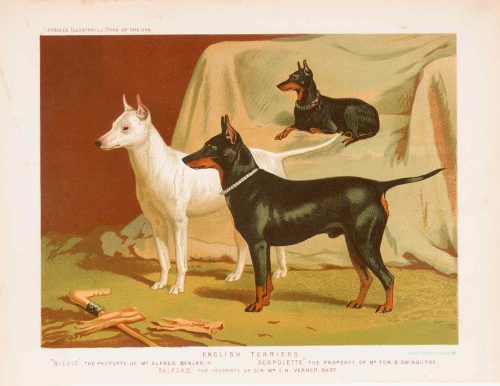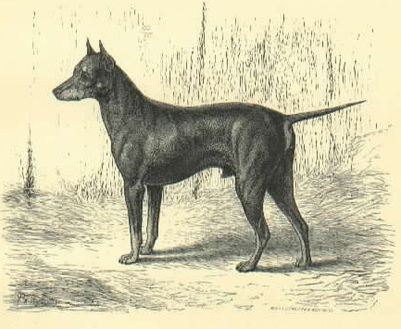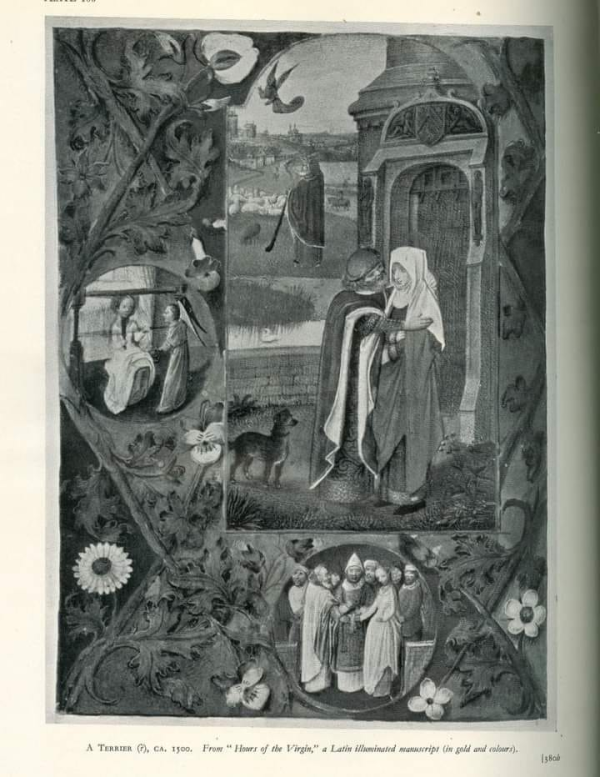
His name was “Belcher,” and at one time, there was a standing bet of $1,000 that the three year old twelve-pounder could best any canine on  the planet. Not only that, but he was thought by many to be the most perfect specimen of his breed.
the planet. Not only that, but he was thought by many to be the most perfect specimen of his breed.
In 1895, that breed was called the Black-Tan Terrier, a time when breeders were working to “set” color in the breed. The noted dog writer at the time, Stonehenge, wrote: “First the black must be jet without admixture with the tan or a single white hair; secondly the tan must be rich mahogany, defined distinctly by a marked and clear line where it meets the black.”
The breed wasn’t called the Manchester Terrier until 1924, a nod to the place in which it was originally bred (and interestingly, the aforementioned Stonehenge felt the name, “Manchester” was “useless and uncalled for, and derogatory to the breed.” He preferred the English Terrier). When the breed was first exhibited at Hull in 1875, it was Belcher who took first and special prizes there. He was bred by Henry Lacy, and eventually Belcher’s ownership transferred to Tom B. Swinburne.
Some believe that Belcher’s image (seen above) may be the first depiction of a Manchester Terrier, nee Black-Tan Terrier, but “Melissa,” a friend of NPDD, and a Manchester Terrier fancier, recently shared with us the image seen below. She was responding to a general question we posed to readers recently: What is oldest known image of the reader’s breed?

When “Melissa” queried fellow Manchester Terrier owners, they pointed out the dog in this image from the Book of Hours, a Christian devotional book popular in the Middle Ages. It is thought to be the earliest known illustration of a black and tan terrier type dog dated to 1500. The earliest known written description comes from Dr Caius, Queen Elizabeth I’s physician. In detail, he described small black and tan colored, terrier type dogs that bear a remarkable resemblance to today’s Manchester Terrier.
Of the breeds that claim antiquity, the Manchester Terrier certainly has the goods.
Image: “Silvio,” the Property of Mr. Alfred Benjamin. “Serpolette,” the Property of Mr. Tom B. Swinburne. ‘Salford’ the Property of Sir Wm. E.H. Verner, Bart.” From Cassell’s The Illustrated Book of the Dog, this print is available for purchase here

Very interesting as always. Thank you.
What a lovely comment to leave, thank you, Dana!!
What a lovely comment to leave, thank you do very much, Dana!!
Wish I could have found this plate in color- I’m still looking. Great article, thanks! We appreciate all you do to bring attention to purebred dogs!
Couldn’t have done it without you!
Great information!